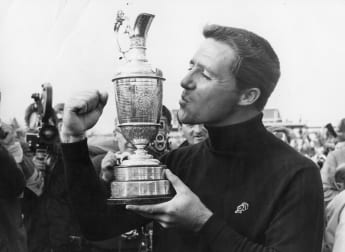In the second instalment of a new series for europeantour.com, PGA Professional Ian St John looks back at the pivotal moment from last week’s Nedbank Golf Challenge hosted by Gary Player.

By Ian St. John, PGA Professional
Defining ‘play of the week’, never mind awarding it, is a difficult task. Some weeks it’s clear, obvious even, whereas on other occasions it’s simply a matter of opinion.
My task is to attempt to identify not only a shot and its result, but the key decisions a player has made that influenced their strategy.
As the great Gary Player once said, “we create success or failure on the course primarily by our thoughts.”
So, with that in mind, let’s take a look at this week’s candidates:
1. Tommy Fleetwood, for his approach to the 72nd hole
Leading at the time, his approach shot finished twenty feet away, allowing an opportunity for birdie and essentially taking bogey out of the equation.
2. Marcus Kinhult, for his tee shot on the Par three, 16th (70th hole)
Also leading at the time, after the most improbable birdie on the previous hole, he fired his ball to the middle of the green and made par. Every other player in contention would bogey that hole.
3. Marcus Kinhult, for his approach to the 71st hole
Still leading, and after a very poor tee shot, he hit his approach onto the green, enabling a two-putt par. Keeping the ball on the green required a left to right “hold up” shot (bringing the lake on the left firmly into play) from a lie where the ball was above his feet, which was very well executed from the young Swede.

First up, let’s break down Fleetwood’s approach shot to the 72nd hole:
• Approach is 205 yards, 201 online to the flag.
• At that stage he was tied for the lead.
• To make a birdie required a very risky approach shot.
• The pin is placed in the back-right portion of the green, on a sliver of a shelf.
• A slightly short approach shot brings the front bunker into play and, consequently, a higher percentage of making bogey.
• Even if your distance control is perfect, a “pulled” approach by just a couple of yards will result in the ball being “swatted” away by the slope protecting the pin. It’s going to be a tough two putt from at least thirty feet.
A “push” right, again, by the smallest margin is going to leave you with a delicate chip shot from unpredictable kikuyu rough. Percentage of making bogey, now considerably higher.
• Tommy fires a seven iron over the flag, landing in the back fringe and spinning back to leave a twenty-foot putt for birdie.
• Tommy identified that selecting to play a seven iron meant that even if it was going to be long (up in the stands with the spectators long), there was a drop zone that allowed him a straight forward chip for his third shot.
• Tommy eliminated all the trouble, by playing the percentage approach shot with a seven iron – even if the eight iron was already limbering up, preparing for action!
Secondly, let’s look at Kinhult’s tee shot to the par three 16th (70th hole):
• He has just made the most improbable birdie on the previous hole.
• Marcus is now tied for the lead Fleetwood.
• Adrenaline has got to be flowing. The title, $2.5million, huge Race to Dubai points and world ranking points are now within his grasp.
Title rivals, Fleetwood, Bernd Wiesberger, Louis Oosthuizen and Jason Scrivener all find difficulty on the 16th resulting in bogeys.
• Marcus strikes a seven iron from 205 yards to thirty feet.
• Thirty feet? Hardly the most exciting shot in the world, but under the circumstances, brilliant!
After more deliberation, though, I think Tommy has to take it. As outlined above it was a thoroughly thought-out and executed plan, especially from a man who hadn’t won in nearly two years and would have been aching for the trophy.






